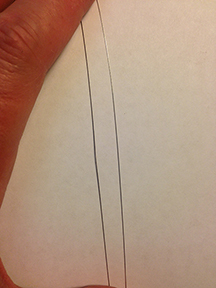That Troublesome E String on your Violin
Posted by Jarek Powichrowski on 4th Jun 2014
In our quest for optimum sound quality from our violins it seems that the E and G strings are the hardest to manage. E strings tend to whistle and G strings tend to buzz. Let's talk about that annoying E string whistle.
There are a number of variables that can contribute to this problem. It may be caused by the way the string is mounted. For example, if the string sits on the bridge or nut incorrectly you might get a whistle, but while the setup of a violin is extremely important for sound, very often you may simply need a new string.
In my experience, the E string that comes in a set of strings is not of equal caliber to the other strings and often makes me wonder if it isn't just designed to be weaker. In other industries this is a common practice known as planned obsolescence and serves to manufacture repeat business as parts fail.
A common problem with E strings that come in a set is their thickness. They are simply not thick enough. They are also very thinly coated, sometimes with Gold or Platinum. WOW. That gives them an image of quality and makes them a very attractive proposal to players. Unfortunately, that coating does not last more than two weeks in my experience. After that you are left with a thin string that begins to rust very quickly, especially in the sweaty little hands of young players who tend to perspire more than adults. The photo below shows the very subtle difference between a new string and a slightly rusted string. Once the string's coating deteriorates even a little it goes out of tune, sounds muted and might refuse to react properly. Hence, this characteristic whistling sound when first touched by the bow. It will be especially noticeable in chords. The remedy, of course, is replacing a string.

When choosing an E string you should find one that is thick enough. I like a thickness around 0.27 mm. For older 18th century violins with higher arching sometimes 0.26 mm is enough. Most of the time choosing the right string takes care of the whistling problem.
In my next post I will discuss set up of E and G strings. Visit Princeton Violins for advice on your sound adjustments or princetonviolins.com to purchase strings. We have a wide selection of quality strings and are always happy to help you choose the ones that are right for you.

